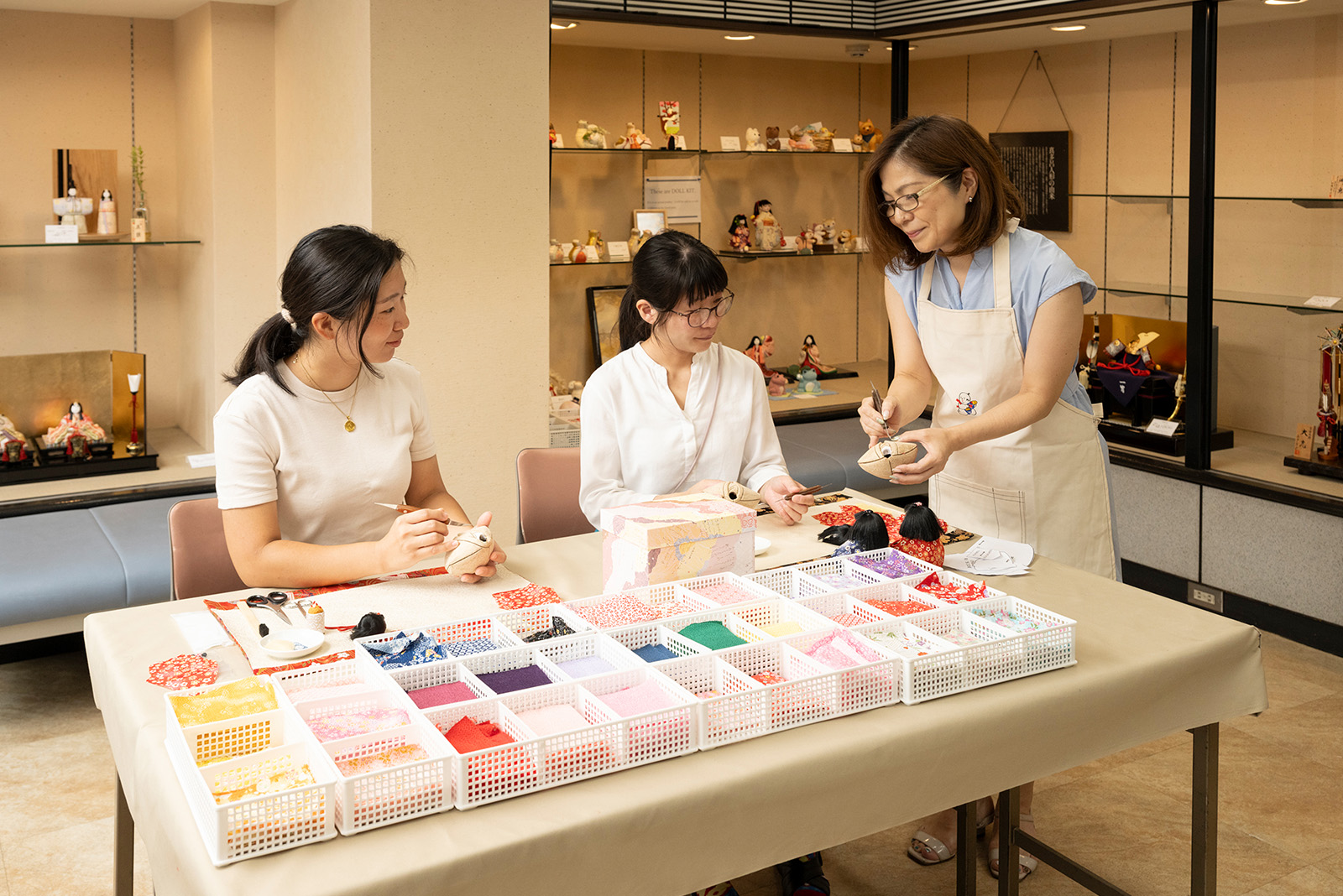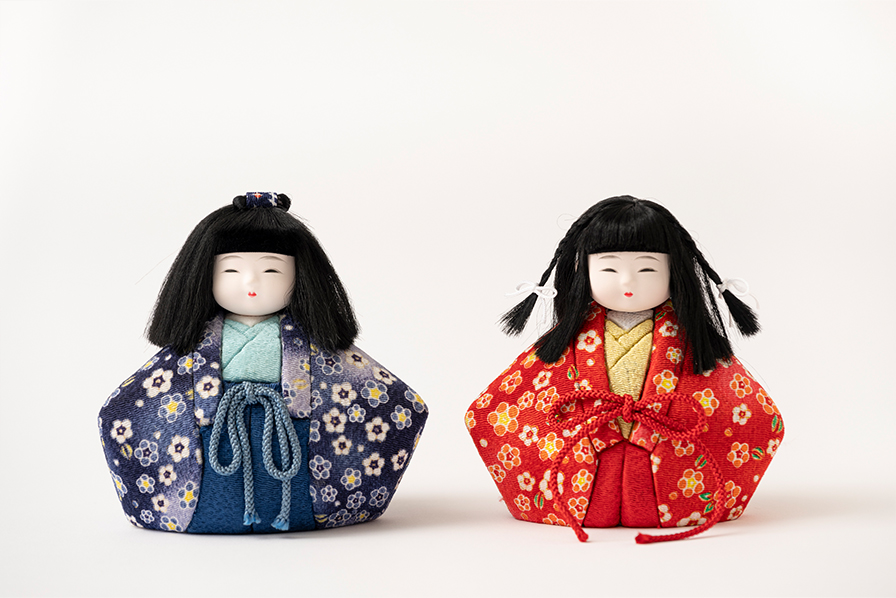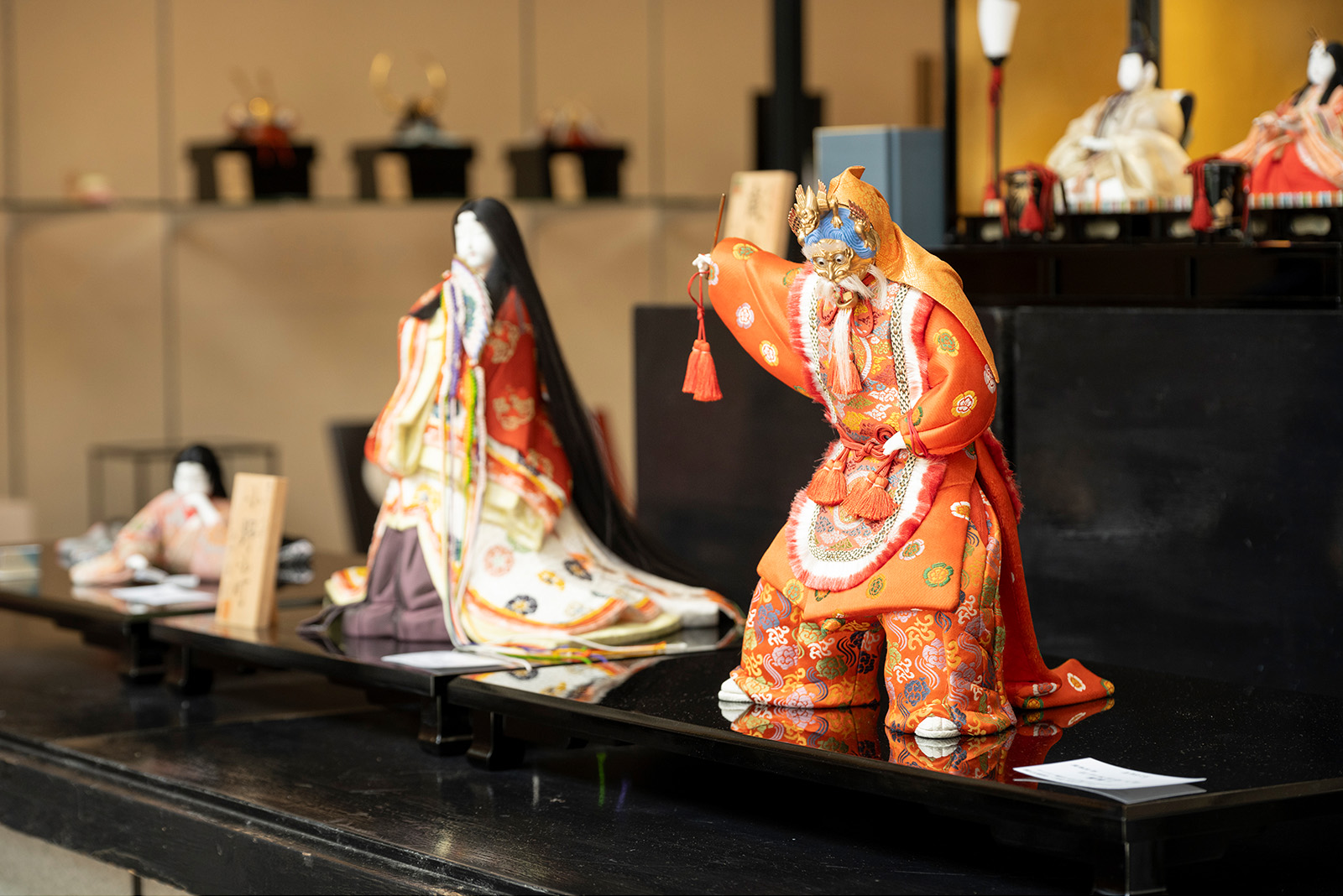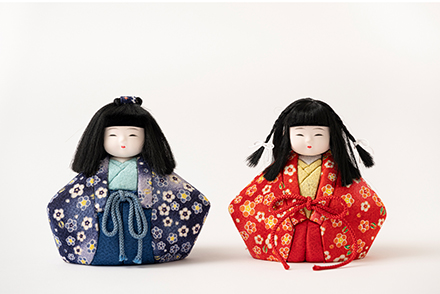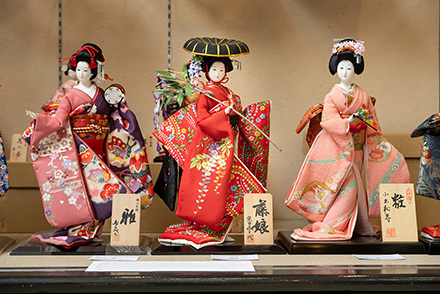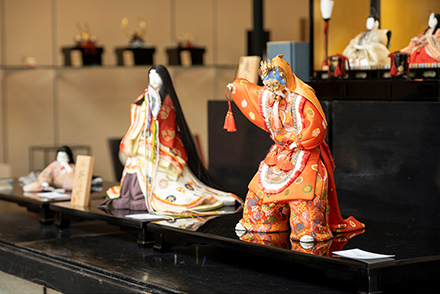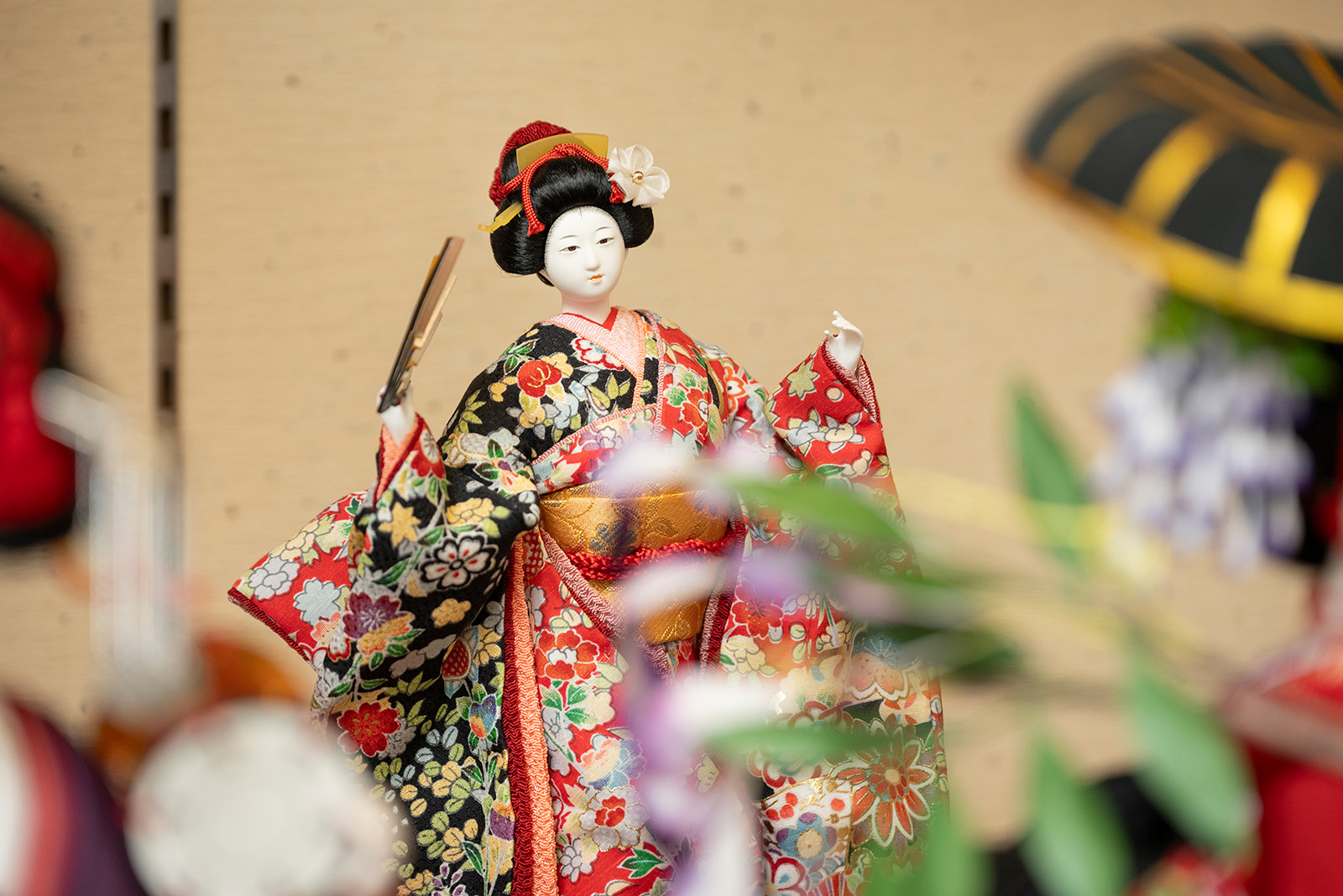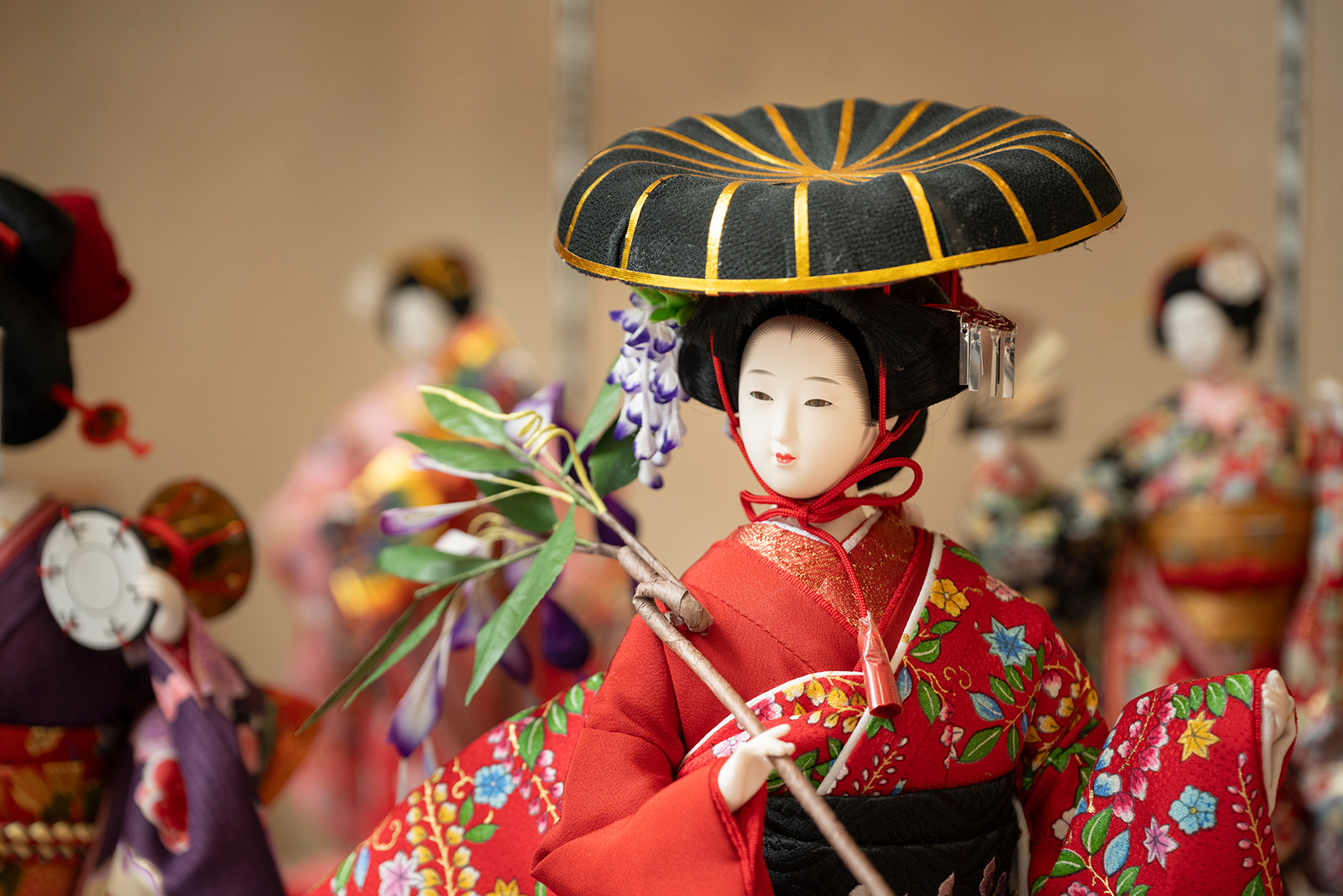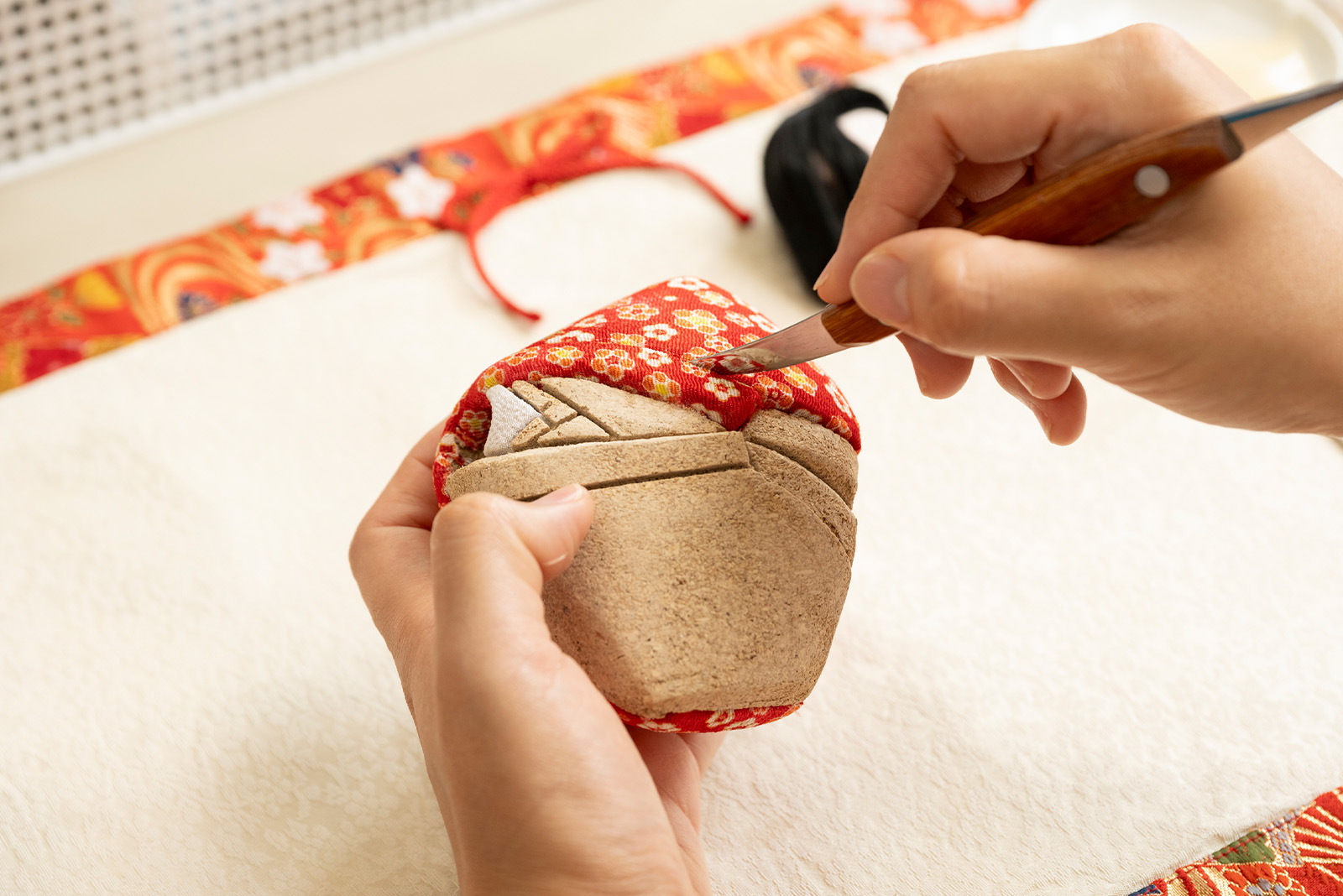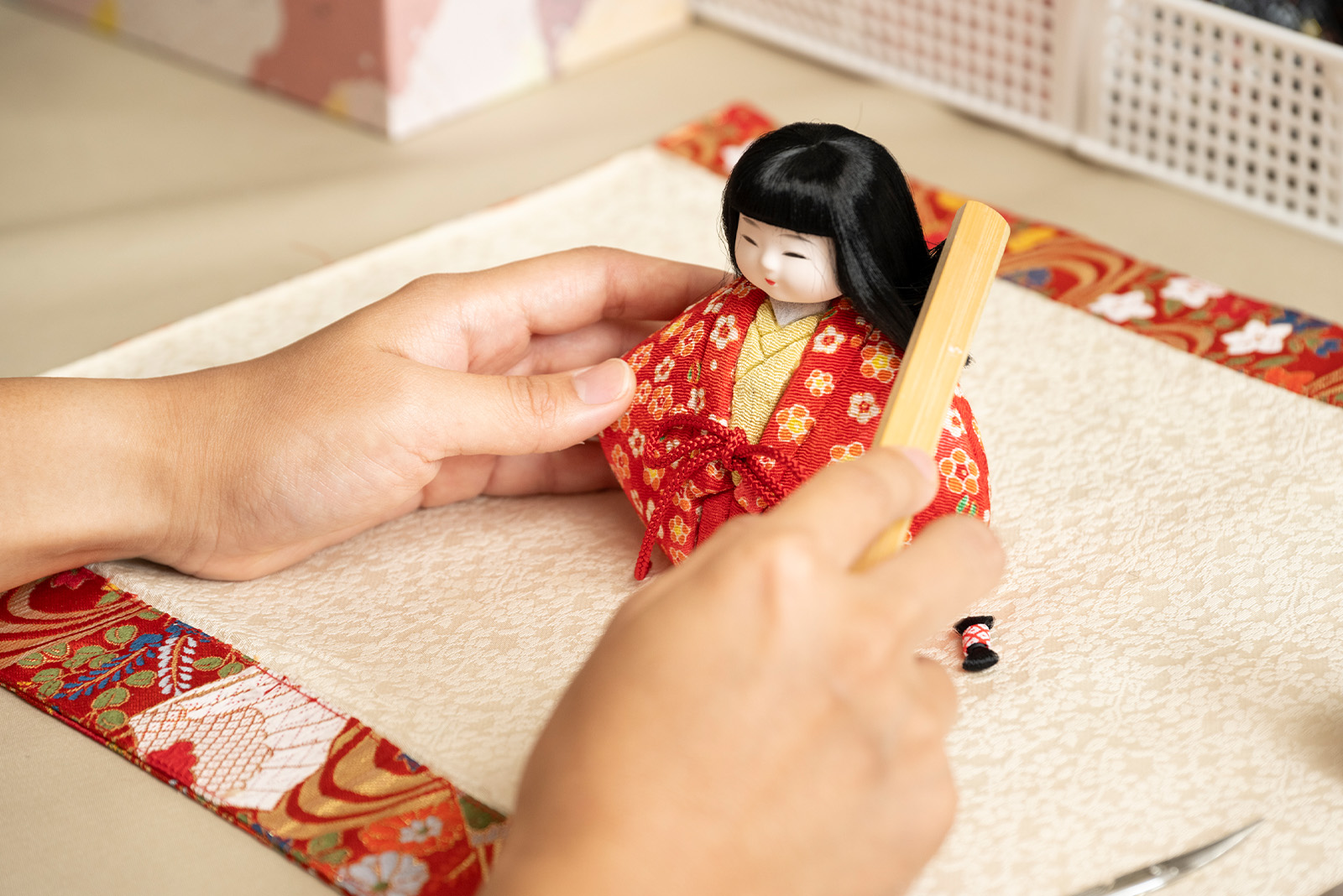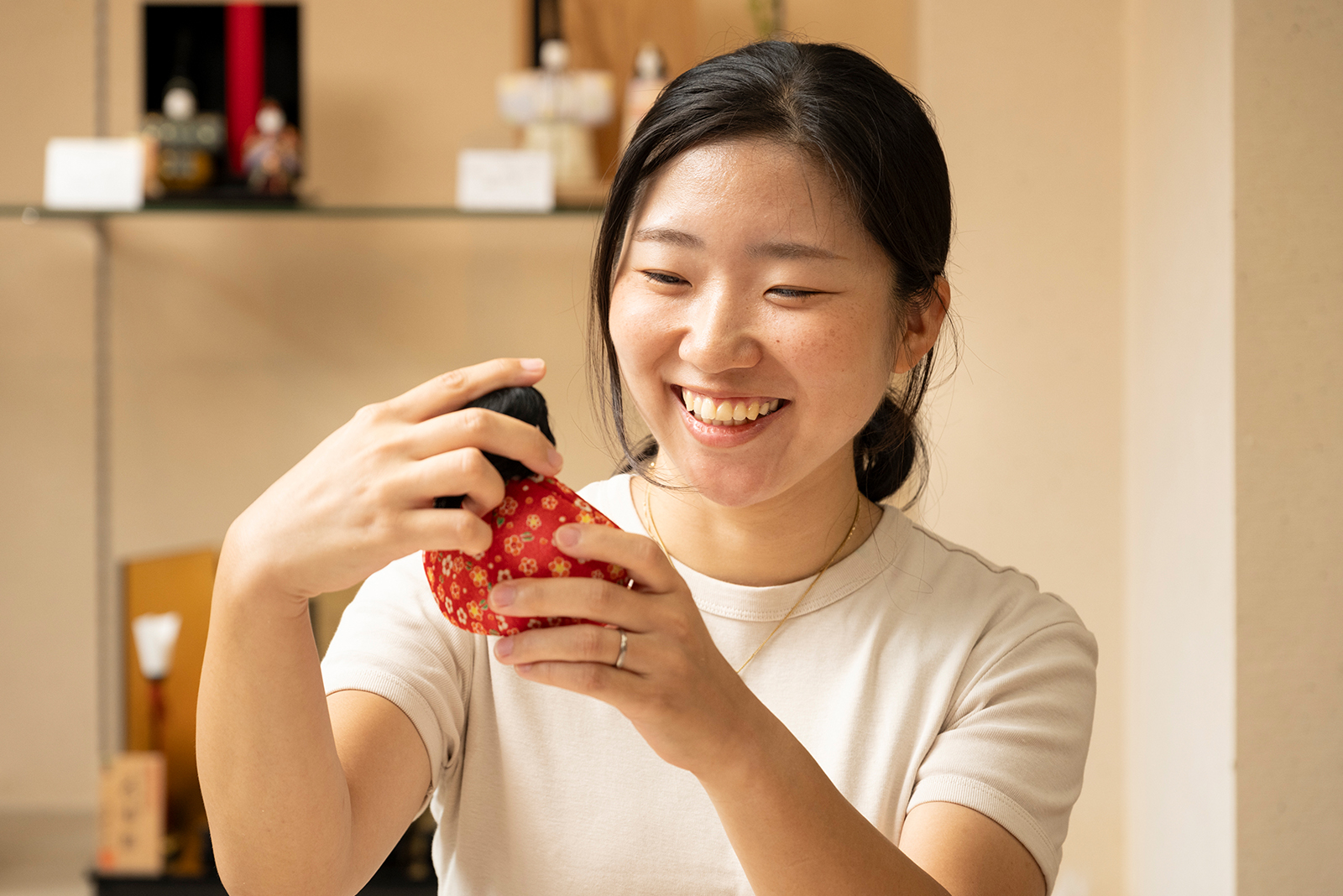The Japanese culture of wishes on silent dolls
Japanese dolls have been passed down through the ages as a part of Japanese culture from the days of old. They are not only beautiful works of art, they have also been widely loved by Japanese people throughout history as a symbol of prayers for the health and safety of acquaintances, friends and family, and for the healthy growth of children.
The tradition that Mataro has passed down through the generations is the Kimekomi Ningyo, a type of Japanese dolls. These dolls are adorned with clothing by pressing fabric into grooves that are etched into the wooden body. It is said their widespread popularity in all household sizes is due to being small compared to the famous type of Japanese dolls called the ichimatsu doll.
From Kamo Ningyo dolls to Kimekomi Ningyo dolls. A history woven over 290 years.
The origin of the Kimekomi Ningyo doll was about 290 years ago. They started from small dolls made by Tadashige Takahashi, who served at the Kamigamo Shrine in Kyoto. These dolls, hand-carved from wood, were called Kamo Ningyo, taking their name from the Kamigamo Shrine at which they were crafted. They slowly spread around Kyoto.
Subsequently, Kamo Ningyo dolls displayed all sorts of developments through the hands of different craftspeople, and passed into Tokyo in the Meiji era through the hands of Tokyo puppeteer Eikichi Yoshino. Yoshino's development from wood carving to die cutting made mass production possible. The name was also changed to Kimekomi Ningyo (wood and cloth dolls), and they were widely popularized among city residents who enjoyed handcrafting and doll making.
Boldly, yet delicately. Let your feelings guide you as you fit the clothing into the wooden grooves.
In this activity, participants get to experience the steps of creating a Kimekomi Ningyo doll all the way to completion. First, the fabric that will serve as the clothing is attached in order onto a body that has been formed by filling a body-shaped mold with a resin called toso, which is a mixture of paulownia sawdust and a natural shofu-nori glue paste. Select whatever pattern you like for the clothing. Choose a pattern that will bring to mind memories of your trip just by looking at the fabric.
Ater selecting cloths with patterns you like, fit the cloths to the body by tucking the fabric into the grooves with a tucking tool. Using Shofu-Nori glue paste, affix the fabric such that there are no misalignments. Place each single area slowly and carefully. As you insert fabric in the wood grooves in order from the back, the left sleeve, the right sleeve, and footwear, to the leggings, let your mind reflect upon an image of the face of someone special in your life.
The gentle smile of a doll who has been meticulously crafted with such love
After you insert the head onto the completed body portion and brush her hair, fixing her hair style is the final step. When you set her hair into a cute hair style, your doll will have a lovely smile all for you.
Experience the Japanese culture of sending thoughts and wishes through the Kimekomi Ningyo dolls activity
The Kimekomi Ningyo dolls of Mataro are the only legitimate heirs of the Kimekomi Ningyo tradition recognized from their birthplace in the Kamigamo Shrine. They transcend the status of works of art, and are in fact talismans that intimately protect acquaintances and family members.
We hope this is a special doll making activity that reflects your own personal feelings, giving you a chance to imbue the doll with wishes for special people in your life that you have not been able to say aloud like, "I want you to always be healthy," and, "I want you to grow up to be big and strong."
Launched in 1919 in what is currently Ueno area of Taito. Founder Mataro Kanabayashi studied under the son of Eikichi Yoshino, who brought Kamo Ningyo techniques back from Tokyo, and built the foundation for modern Kimekomi Ningyo doll making.
Combining both a gracefulness and gentleness, the Mataro dolls have garnered high praise from the Kimekomi Ningyo birthplace of the Kamigamo Shrine, and are the only dolls to receive the Shrine's authorization as the legitimate heirs of the tradition. With their refined and glamorous dress combined with a gentleness of expression, Mataro dolls also garner high praise as works of art. Recent years have seen an expansion past traditional seasonal festival doll making into the realm of designs patterned after animation and game characters. They are enjoying a great deal of popularity from fans both within and outside of Japan.
